Not well valued, Turkey’s history is rich. Many civilizations have occupied its territory. This legacy is today materialized by the presence of many archaeological sites in Turkey.
For a history enthusiast, Turkey is an exciting and complex territory. It is exciting because it is constantly moving and that there is always something going on. But it is also complex because changes make it difficult to understand the general public.
The civilizations present on what is today Turkey have been chained. Ancient peoples, Romans, Byzantines, Arabs, Mongols, Ottomans... Most of them left their mark on modern Turkey. Among these memories, archaeological sites are among the most representative.
With this article, discover the 13 main archaeological sites in Turkey!
Cities and cities
Troy, Ephesus, Aphrodisias, Pergame and Hierapolis are all classified as UNESCO World Heritage.
Troy
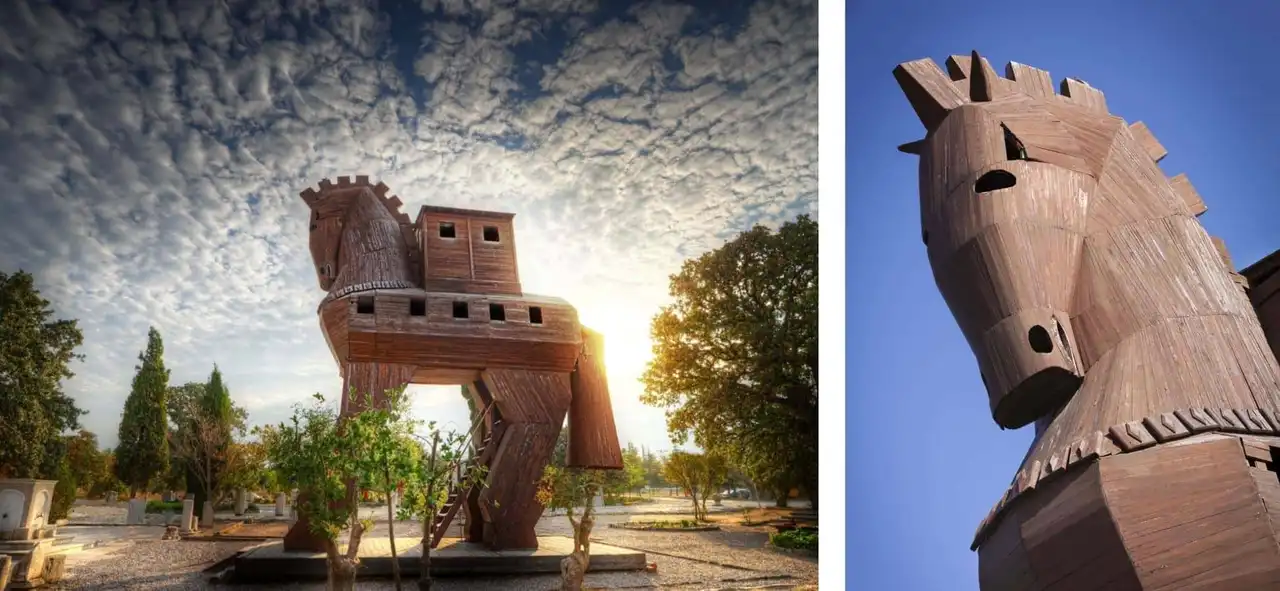
Trojan Horse, Turkey – Photo credit: Shutterstock – Mati Nitibhon & CREATISTA
Conservation condition: ★★★
Public knowledge: ★★★★★
Historical influence: ★★★★
A place dyed both of reality and legend, Troie may be the most known archaeological sites in Turkey. The legend is, of course, Iliade d’Homère . Even today, historians wonder whether the Troy War took place as it is told or even if the event actually existed.
The legend is what makes Troie famous, hence the presence of the famous Trojan horse at the entrance of the site. Yet the historical value of the site is real. It represents the first contact between Anatolia and the Mediterranean world. Most of the ruins date from the Bronze Age, about 3,000 years, thus strengthening the precious character of Troy.
Ephesus
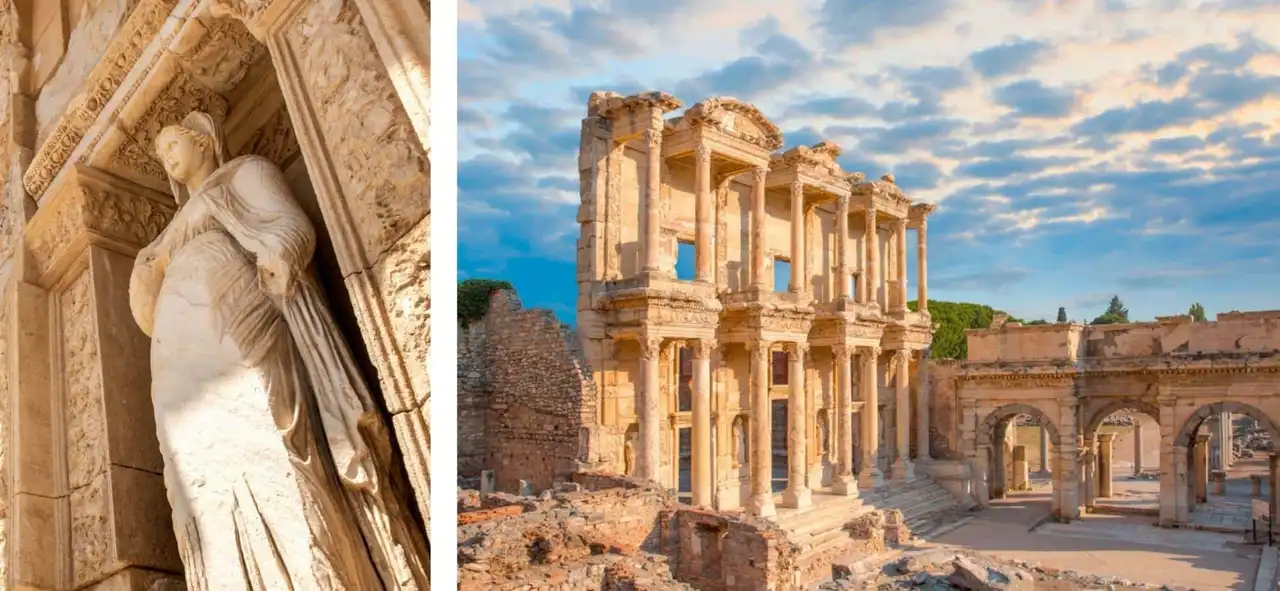
The library of Celsus in the ancient city of Ephesus, Turkey – Photo credit: Shutterstock – Pommy.Anyani & muratart
Conservation condition: ★★★★
Public knowledge: ★★★★
Historical influence : ★★★★
Ephesus is one of the main archaeological sites in Turkey. In the ancient world, it is famous for having been the host of the temple of Artemis, one of the seven wonders of the world. Today, only a few remains remain.
Beyond this aspect, Ephesus is a unique testimony of a Roman city of Anatolia. It is by far the best preserved in the region. The best preserved monument is the library of Celsus, the most famous image of Ephesus.
Aphrodisias
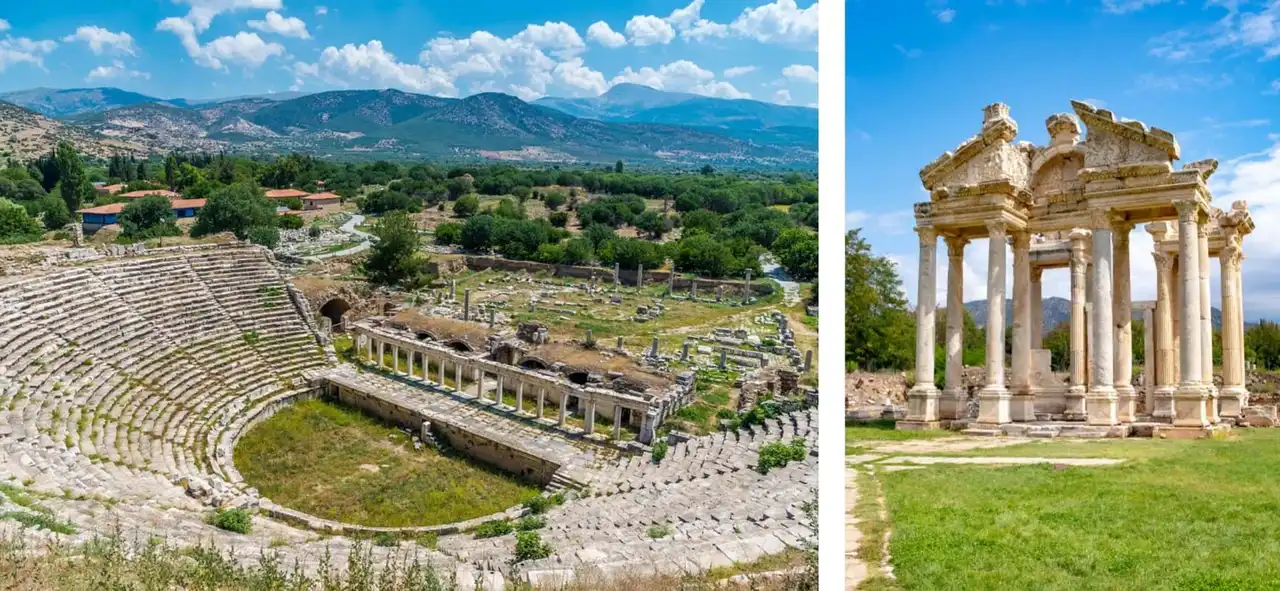
The Théâtre de l’ancien ville des Aphrodisias and its remains, Aydin, Turkey – Photo credit: Shutterstock – Yulia Kupeli & Haluk Cigsar
Conservation condition: ★★★★
Public knowledge: ★★
Historical influence: ★★★
If Ephesus is the testimony of a Roman city of Anatolia, Aphrodisias is that of a Greek city. And what testimony! This archaeological site in Turkey is in a quite remarkable state of conservation, despite its ancient times and the fact that it is on a seismic zone.
Many monuments are clearly recognizable, including hippodrome and amphitheatre. Aphrodisias is dedicated to the goddess Aphrodite . The ruins of the sanctuary built in his honor are always visible.
Pergame
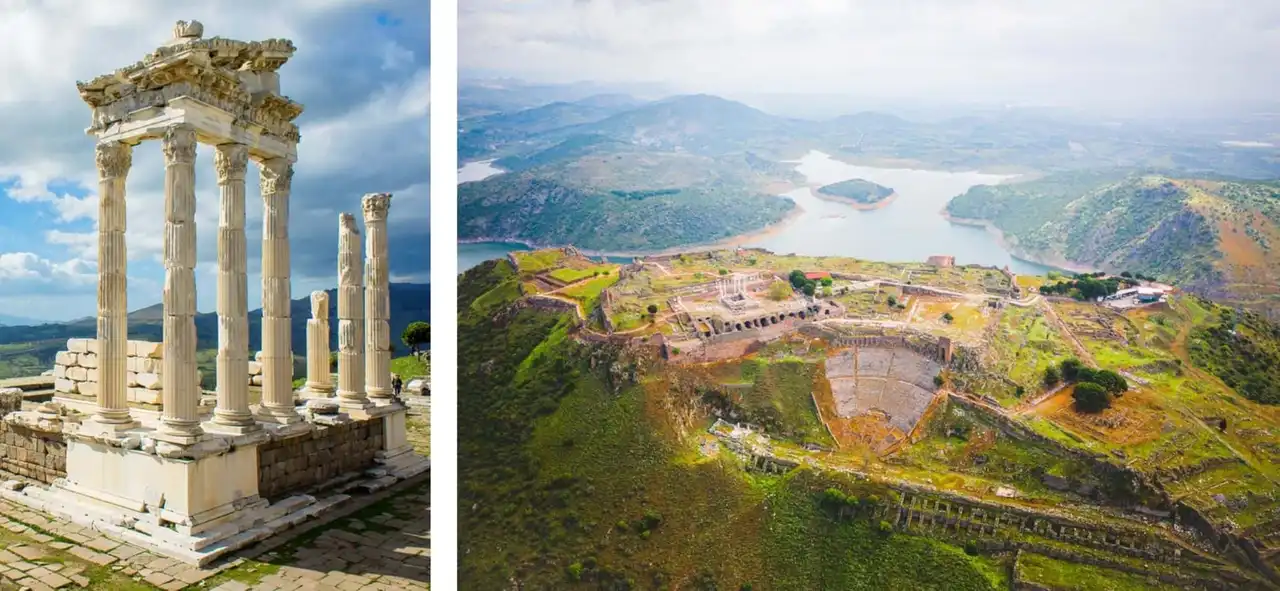
Vestiges of Pergame archaeological site, Turkey – Photo credit: Shutterstock – Yulia Kupeli & bodrumsurf
Conservation condition: ★★★
Public knowledge: ★★
Historical influence : ★★
Pergame is another archaeological site in Turkey representing the ancient world Hellenic . Located close to the city of Bergama, the visit of Pergame allows you to discover many vestiges, the most important of which is the amphitheatre.
Built on a hill, its geographical location is unique and allows to appreciate the view once on site. Know that the most important monument of Pergame, its great altar, is preserved at the Pergame Museum to Berlin .
Hierapolis / Pamukkale
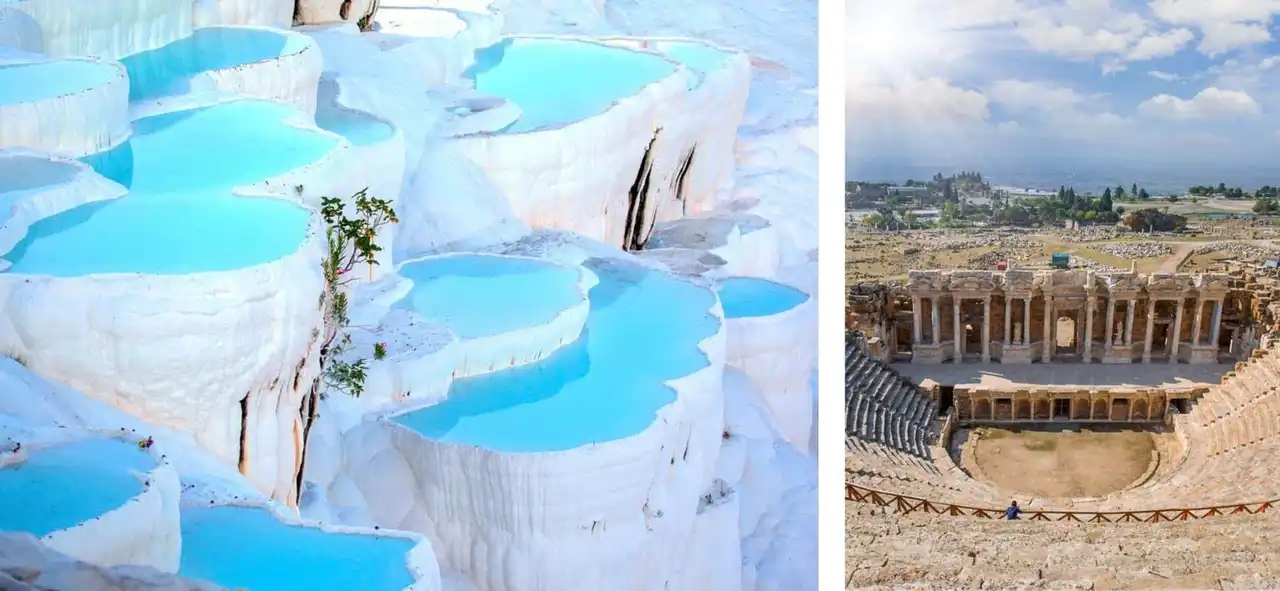
The terraces of Pamukkale and the amphitheatre of Hierapolis, Turkey – Photo credit: Shutterstock – muratart
Conservation condition: ★★★★★
Public knowledge: ★★★★
Historical influence: ★★★
This archaeological site in Turkey could be confused with hot water basins, called Pamukkale terraces. Yet confusion does not exist: these basins are an integral part of Hierapolis! This is why Unesco ranked both sites together in 1988.
This geological curiosity has made Hierapolis the main spa town of Anatolia in the ancient times. It is therefore a site with several interests. The archaeological and historical interest in Hierapolis, including the sublime preservation of the amphitheatre and the tomb of Apostle Philip. The relaxing interest with Pamukkale and its hot water basins!
Milet
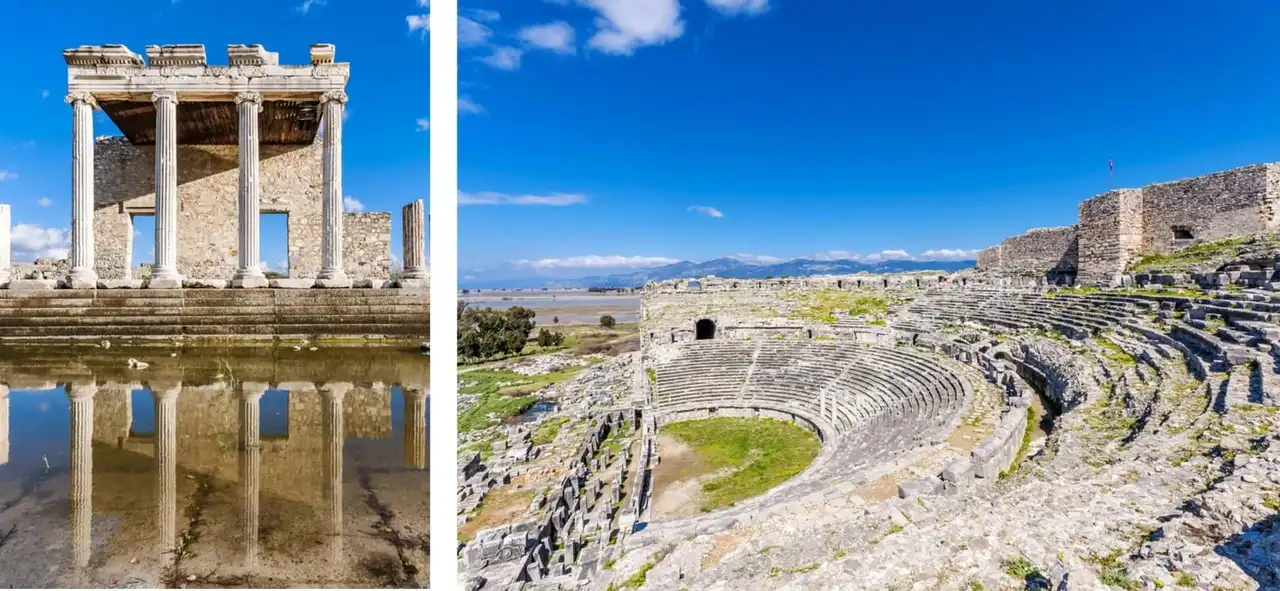
Ancient City of Miletus, Turkey – Photo credit: Shutterstock – Nejdet Duzen & Nejdet Duzen
Conservation condition: ★★★★
Public knowledge: ★★
Historical influence: ★★★
This archaeological site in Turkey dates from the time of Minoan civilization , about 2,000 years before our era. The preserved remains are newer and belong to the classic Hellenic civilization.
Originally, Milet is a port. The time that passes and the natural elements have rejected the sea more than 5 kilometers! Through our visit, we can see the theatre, the portico of the agora, the thermal baths still on the stage.
Milet's most emblematic monument is its market door. It is now preserved at the Pergame Museum in Berlin.
Termessos
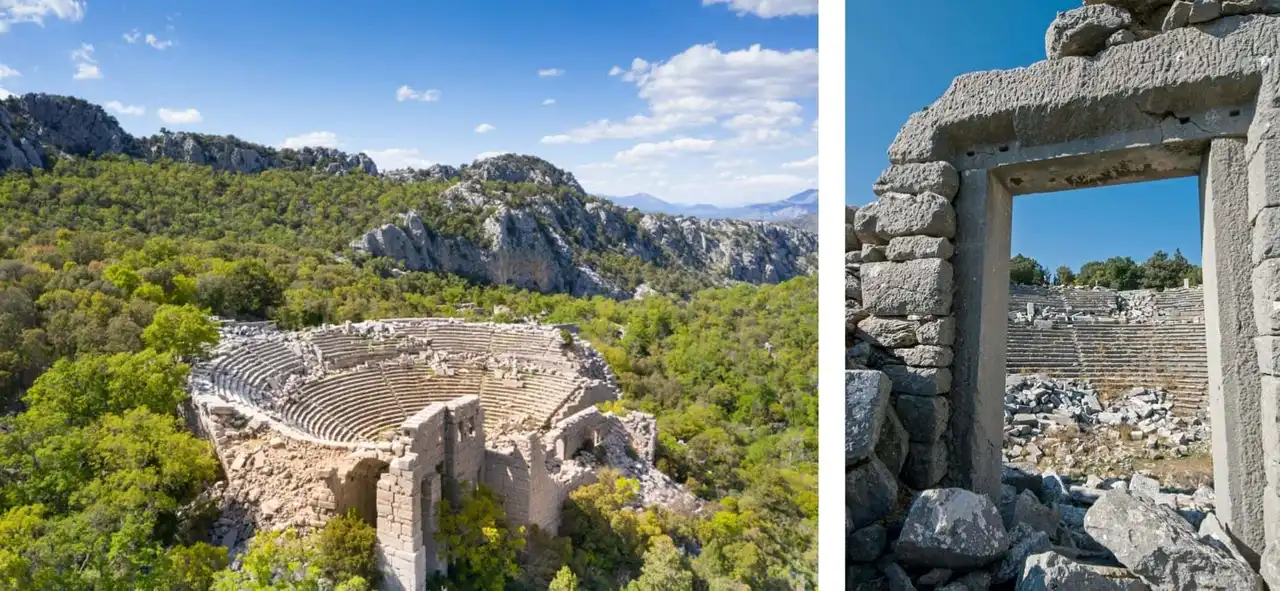
The ancient city of termsos and its amphitheatre, Turkey – Photo credit: Shutterstock – fotopanorama360 > Zeynel erden
Conservation condition: ★★★★★
Public knowledge: ★★
Historical influence : ★★
Former city of the region of Pisidie, Termessos is an archaeological site in Turkey quite special. Built in the mountain in the middle of a pine forest, you have to walk long to reach it.
Once at the top, the calm surrounding the site impresses and soothes. Unique curiosity, Termessos has never been searched! Nothing has moved since the abandonment of the city, except for the time that passes. Of all the remains, it is the theatre that is the most impressive, especially by the view it offers.
The archaeological complexes
Sagalassos
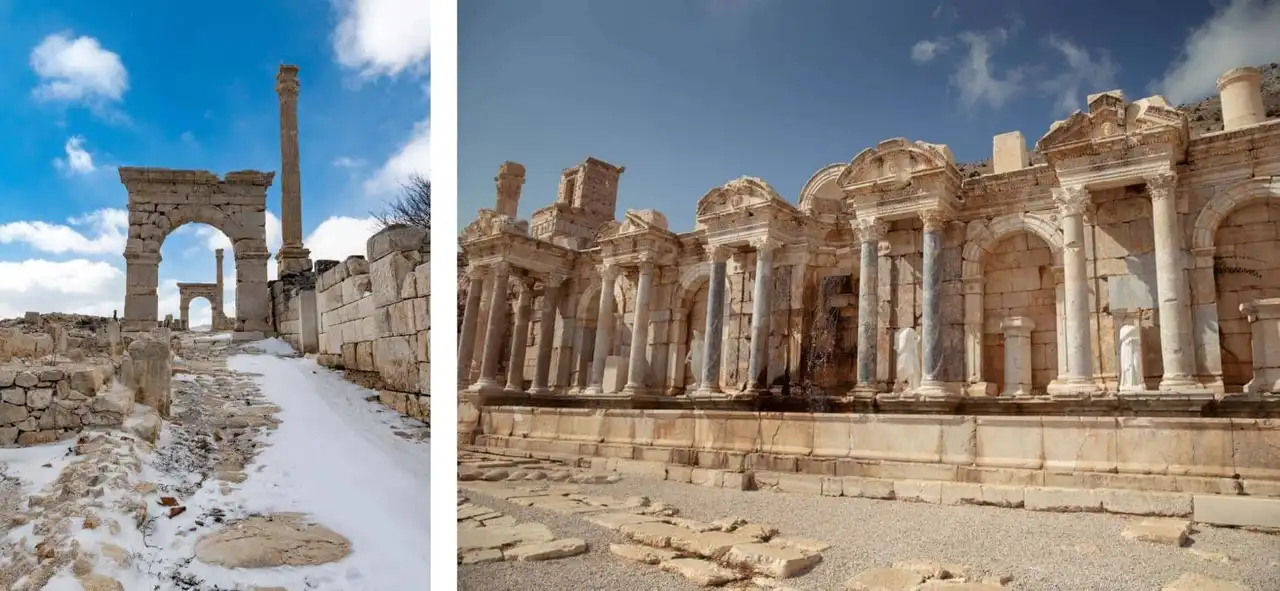
Fountain and vestiges of the ancient city of Sagalassos, Turkey – Photo credit: Shutterstock – Ender BAYINDIR & Ekaterina Ormanci
Conservation condition: ★★★
Public knowledge: ★★
Historical influence: ★★★
Sagalassos is an archaeological site in Turkey rather unknown. His story is interesting. Sagalassos is nicknamed by the Romans “the first city of Pisidie” and its particularity is to be located about 1,500 meters above sea level.
Monuments are the classics of a Roman city. The most beautiful of them is its nymphea, a monumental fountain, from which the water flows again!
Göreme

Archaeological site of Göreme, Turkey – Photo credit: Shutterstock – Olena Tur & Birol Bali
Conservation condition: ★★★★★
Public knowledge: ★★
Historical influence : ★★
The pictures of balloon in Cappadoce Does that tell you something? They were taken to Göreme! Among the archaeological sites in Turkey, Göreme is both the most amazing and exceptional. The city is famous for its rock formations in fairy chimneys. These are large natural columns with a summit different from the rest of the rock.
Göreme is the world’s most famous place to admire this wonder of nature, especially in the valley so well known as “love”. Inside some rocks, houses were built! An unforgettable visit.
Göbekli Tepe
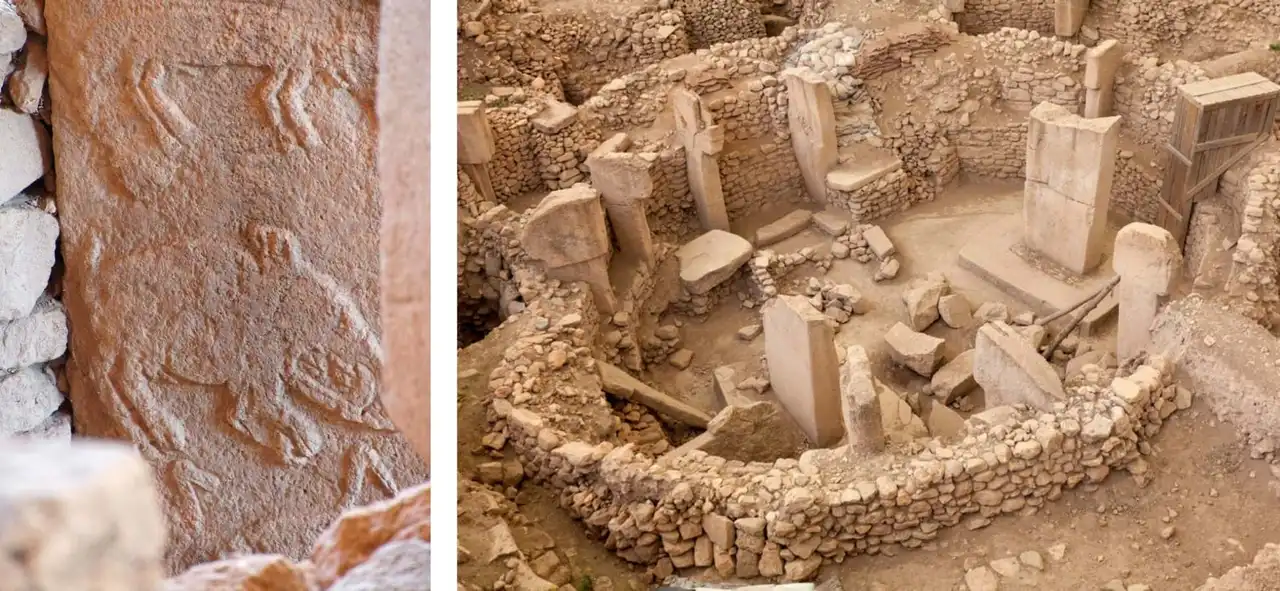
Former site of Gobekli Tepe in SanliUrfa, Turkey – Photo credit: Shutterstock – steve estvanik & acsen
Conservation condition: ★★★
Public knowledge: ★
Historical influence : ★★★★
World Heritage Site of Unesco, Göbekli Tepe is the oldest archaeological site in Turkey. Indeed, his abandonment is attested to the 8th millennium before our era (yes, – 8,000!).
His recent discovery still makes this site quite mysterious. His function remains unknown. But archaeologists are unanimous on the importance it has because its edification dates from a capital era for human civilization.
Hattusa
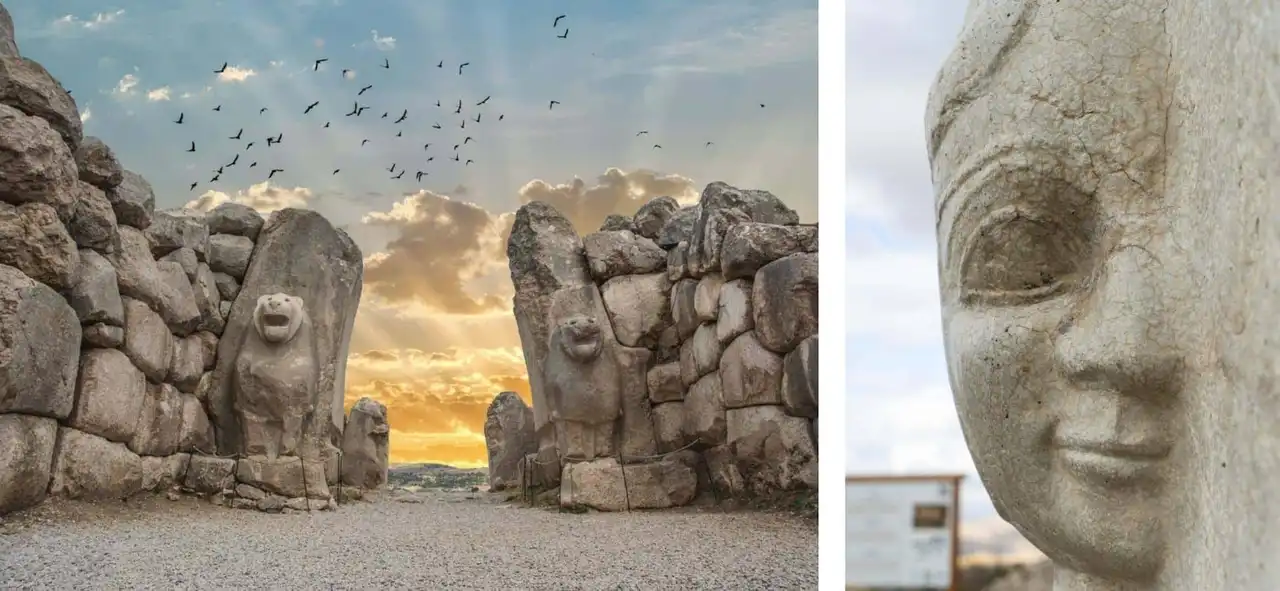
The famous gates of the archaeological site of Hattusa, Turkey – Photo credit: Shutterstock – Stylone & AlpKaya
Conservation condition: ★★★
Public knowledge: ★★
Historical influence: ★★★
This archaeological site in Turkey is no other than the ancient capital of the Empire hittite . Abandoned around 1,200 before our era, the excavations allowed many elements to be released. The most famous is the gate of the city and its statues of Sphinx.
Some parts such as fortifications have been reconstructed. Hattusa’s visit allows us to learn a lot about the Hitlerite civilization, almost unknown to the general public.
Çatalhöyük
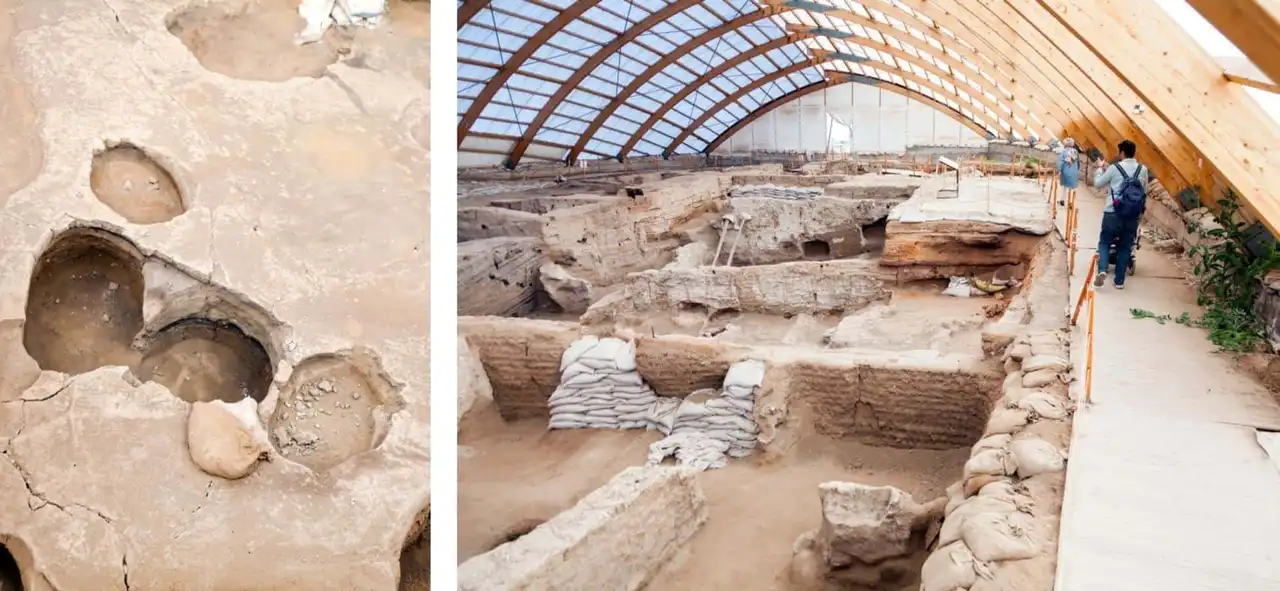
Archaeological site of Çatalhöyük, Turkey – Photo credit: Shutterstock – acsen
Conservation condition: ★★
Public knowledge: ★★
Historical influence: ★★★
Like Göbleki Tepe, this archaeological site in Turkey is very old because its abandonment is attested around 5,700 before our era. The importance of Çatalhöyük has allowed it to be classified at UNESCO World Heritage.
Catalhöyük is a residential city, with no apparent public establishment or a larger house than the other. The busy civilization remains unknown to date.
Curiosity
Nemrut Dağı
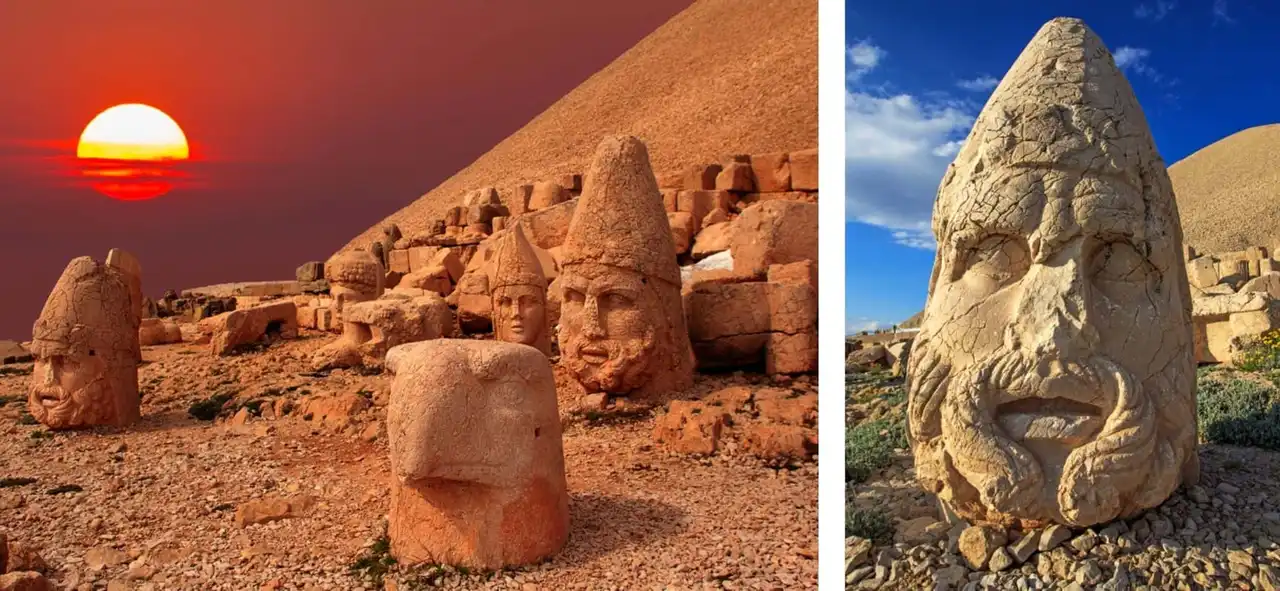
The amazing statues of the archaeological site of Nemrut Dağı, Turkey – Photo credit: Shutterstock – muratart & kataleewan intarachote
Conservation condition: ★★★
Public knowledge: ★★★
Historical influence : ★★
Why is this amazing archaeological site in Turkey classified as UNESCO World Heritage? Because it's unique in the world! The Nemrut Dağı (Mont Nemrut in Turkish) is a mountain with huge stone statues, most of which represent gods.
No statue is still standing today and the heads are exposed to the ground... Its main function is not determined but it could be a royal tomb of the 1st century before our era.
For our rating system, we used the following criteria:
– State of conservation: based on its date of construction and renovations, in which state is currently located the site;
– Public knowledge: the notoriety of the archaeological site for non-initiates;
- Historical influence: the historical importance of the site and its influence on the following civilizations.
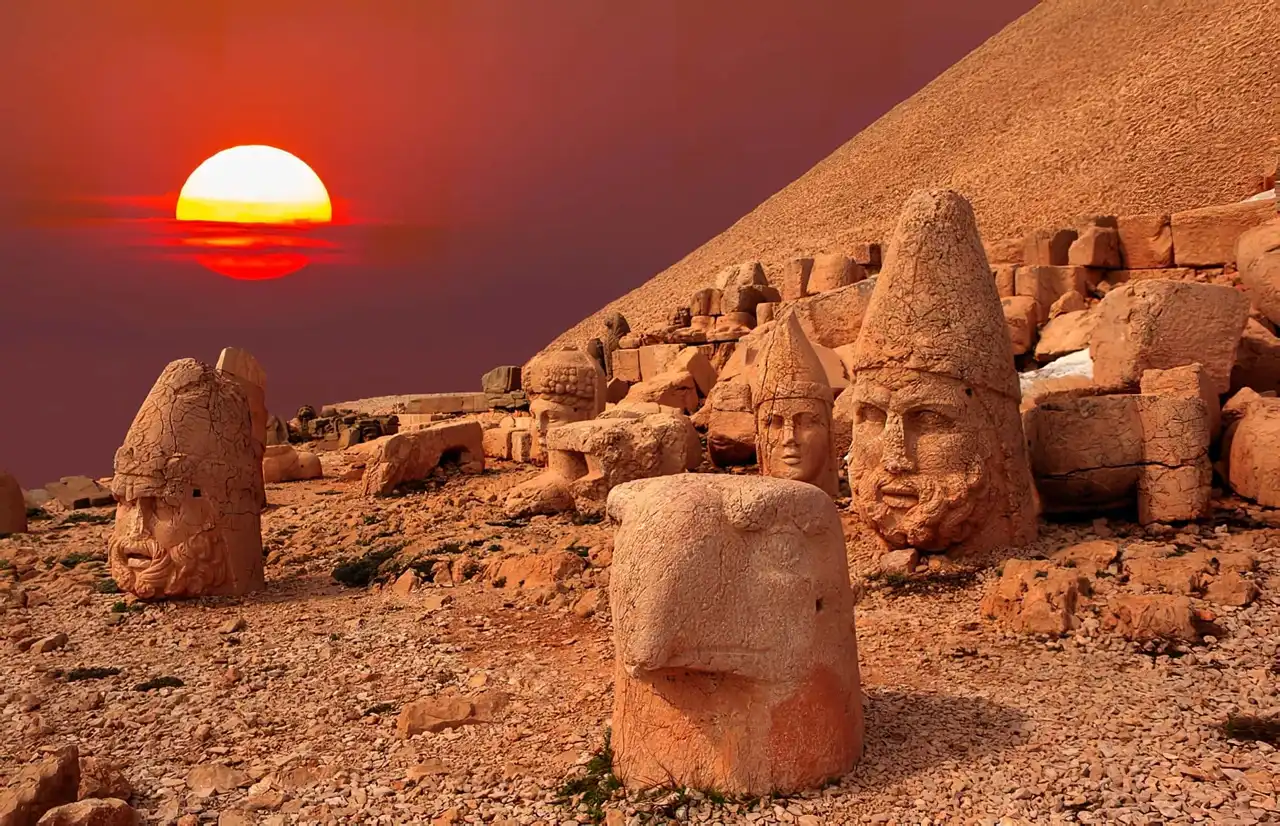






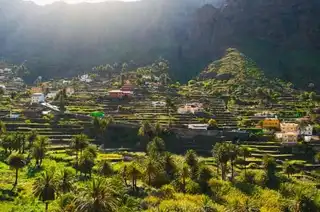
Loading comments ...